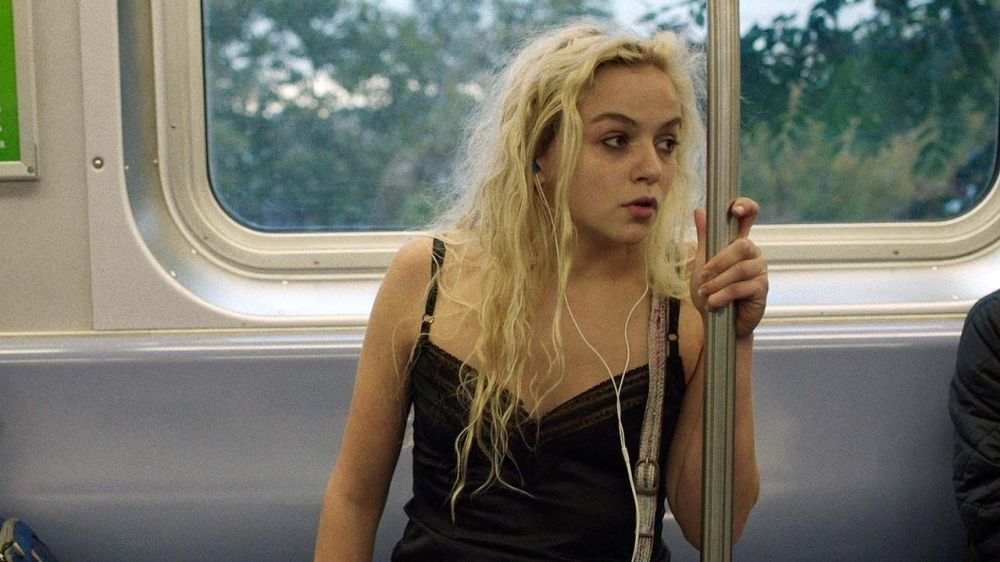by Corey Koepper
★★★★ 1/2 (OUT OF 5)
NOT RATED 1H 28 MIN
SEPT 2 2016 DRAMA
DIRECTOR: ELIZABETH WOOD
 The nightmarish world of Elizabeth Wood’s debut feature White Girl is one where the collision of privilege and hedonism draw out the worst possible consequences, effectively pulling viewers along a journey that doubles as a social critique and vigorously entertaining sensory experience.
The nightmarish world of Elizabeth Wood’s debut feature White Girl is one where the collision of privilege and hedonism draw out the worst possible consequences, effectively pulling viewers along a journey that doubles as a social critique and vigorously entertaining sensory experience.
Fronted by 21-year-old Morgan Saylor’s brave, emotionally devastating performance, Wood is unafraid to place her protagonist’s internal ugliness and irredeemable actions at the core of the film’s “down the rabbit hole” style storytelling, this authenticity backed by the movie’s insistence on unleashing extreme sex scenes and reckless drug use on its audience, which while essential to its NYC-centered story, makes for necessarily challenging viewing.
“White girl” is a thematically fitting slang term for cocaine, as it also describes white, college freshman Leah’s (Saylor) economic and racial privilege, which she exercises in her pursuit of every accessible high and lay, sometimes inadvertently, but oftentimes with blatantly selfish intent. It’s also the powder that coats the film in a vicious snowstorm of white characters constantly utilizing their social, economic, and racial status as a means to exploit and benefit.
Of course the scenarios in Wood’s vision may be a tinge over-the-top, but that doesn’t make her angle dishonest; in fact, White Girl often feels too genuine to comfortably watch, based on the film’s ability to progress into the most extreme situations, while still upholding its naturalistic showcase of urban reality. No matter how ugly it gets, or how outwardly cynical it may seem, Wood’s improvisational, yet atmospheric style allows the film to drift between scenes of excess and atrocity with an engaging visual approach that never sways from its brutal realities.
The camera drifts through hypnotic light and across reflective surfaces, the pace of its cuts often determined by its lead character’s mental state and level of intoxication. As the soundtrack surges with dreamlike energy, White Girl presents itself as a tragedy in a classical sense, while simultaneously grounded in an ethereal, but no less believable, urban jungle.
While the general perception of internet era white girl-ism might fall more into the pumpkin spice latte camp, Wood is more interested in how Leah, freshly moved into college, carelessly drifts her way into the life of a low-key drug dealer, Blue (played by Brian Marc, in an awesome feature debut), and pressures him into selling into selling to her upper crust demographic. They fall for one another, as their lust and human inclination to explore beyond their own cultural circles impairs their judgement.
Sadly, while Leah is conditioned to believe that she always has a safety net, that there can possibly be no dire consequences for her careless pursuit of pleasure, the consequences are all too real for Blue. When he gets arrested, a scene thriving with intensity and “you are there”-style immediacy, Blue, as a young, non-wealthy Puerto Rican man, has virtually no chance in the legal system.

Left with his remaining coke, Leah plunges into an desperate abyss of excess, trying to sell enough drugs to pay for Blue’s sleazy lawyer, but burdened by her overwhelmingly selfish desire to get incessantly loaded. Other factors remain at bay, as well, including Blue’s supplier who is owed some significant cash, and the “assistance” of Leah’s boss, played by Justin Bartha (!!) in a darkly comic encapsulation of the rich, entitled white dude who somehow owns his own magazine.
None of this would work quite as well if Saylor wasn’t so amazing. We’re with her every step of the way, even as we despise her. Saylor’s eyes pulsate with raw emotion, her presence and naturalism finely tuned beyond her age. Always breathtaking to watch, Saylor’s character gives off the impression of naivety, yet we always sense she knows exactly what she’s doing, and that she understands the leverage of her wealth and racial status. Leah’s privilege soon becomes an automatic factor as drugs impair her judgement, only influencing her story more as she becomes wholly absorbed by impulse instead of empathy. The tragedy of her arc still works, even as we can’t possibly justify the despicable decisions she makes.
Compared by many to Harmony Korine-scribed Kids and Spring Breakers, White Girl distinguishes itself by addressing very pressing, current rifts in urban American society. The blossoming affection in early scenes, between Leah and Blue, has a quality of magical realism echoing even Blue Valentine, in a strange sort of way. Wood’s approach provides a twisted angle on the way in which films often find romanticism in youthful, emotional awakening. Despite the public, hardcore sex and bong rips, you almost begin to think these characters may be able to transcend the effects of the socioeconomic gap between them, through finding a meaningful human connection.
But then the white girl kicks in, and it’s all over, the lost time and potential of young people set adrift like dust in the breeze, after their time together was too veritable to not explode. The explosion in White Girl is predictable, but only because it is so realistic. That unfortunately, is the real tragedy.